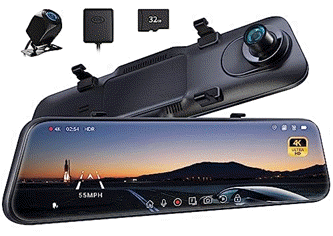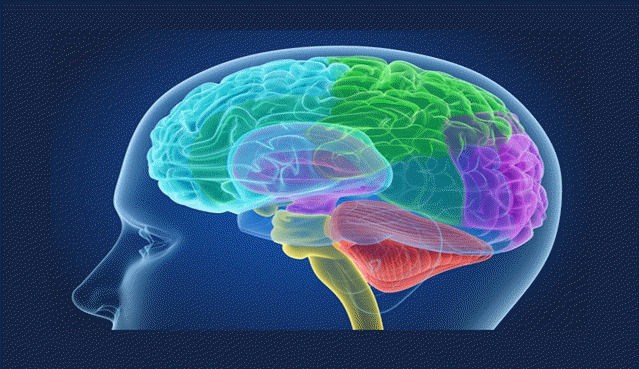
After getting done with my shaving routine, I was looking in the mirror today at my forehead and I was wondering about how much information was being processed while I just looked at my reflection in the mirror. It got me thinking about the complexity of how our brains interpret the images we see every day. What seems like a simple glance in the mirror is actually a sophisticated process that happens in real-time—almost like a hidden backstage show your brain puts on every time you look at your own reflection.
As I stood there, staring at myself, it was almost as if the reflection I was seeing wasn’t just a static image; it felt more like a conversation between my eyes and my brain. My eyes capture the light reflecting off my face, but it’s the brain that translates this visual data into something meaningful. But the deeper I thought, the more questions popped up.
Why does my brain sometimes emphasize certain details—like a new wrinkle or the way my hair is styled today? Why do I recognize my face instantly, but it might take me a moment to spot subtle changes? How does my brain know to recognize my face, even when it’s projected in a mirror?
Let’s go a little deeper down this rabbit hole.
1. Light Reflection and Eye Processing: The Journey Begins
When you stand in front of the mirror, light from your environment bounces off your body, including your face, and enters your eyes. But what happens next? How does your brain take all of this light and turn it into a recognizable image?
- Reflection: Light reflects off you and enters your eyes—but it’s not just any light. It carries a wealth of information about what you’re wearing, your facial expression, and your surroundings.
- Lens Focus: The lens in your eyes focuses this incoming light onto the retina at the back of your eye. But how does the lens know how to adjust for things like distance, depth, and focus?
- Signal Transmission: Your retina doesn’t just capture the image—it transforms it into electrical signals, which are sent via the optic nerve to your brain. These signals are so fast, it’s almost as if your brain is receiving a live broadcast of your reflection.
2. The Brain’s Interpretation: Making Sense of It All
Your brain isn’t just receiving visual signals; it’s translating them into something meaningful. But how does your brain figure out what it’s looking at so quickly?
- Visual Processing: The occipital lobe, the brain’s visual processing center, breaks down the raw data—shapes, colors, and patterns. But how does it know how to recognize a face versus an object in the background? The brain isn’t just “seeing”—it’s interpreting.
- Facial Recognition: Specialized regions of your brain, like the fusiform face area, work tirelessly to identify faces. This is why you can instantly recognize yourself in a mirror. But what happens if you see someone else’s face in a mirror? Your brain might process it differently—almost like seeing an “upside-down” version of reality.
- Spatial Awareness: Your brain calculates depth, distance, and perspective, helping you understand not just the “what” but the “where” of your reflection. You can intuitively know where your body is positioned in relation to your reflection, but how does the brain make these spatial calculations so effortlessly?
3. Adding Layers: Thoughts, Memories, and Emotions
It’s not just about the physical image. Ever wondered why you sometimes feel differently about your reflection—more confident or perhaps self-critical? Your brain doesn’t just process visual data; it integrates your thoughts, memories, and emotions into the mix.
- Self-Reflection: As you look at your reflection, you’re not just “seeing” yourself. You’re evaluating. Maybe you think, “I look tired today,” or “Wow, my hair looks great!” Your brain is integrating these thoughts into the image, layering emotional context onto the physical appearance.
- Memory Integration: Your brain compares the image you see to past memories of your appearance. The reflection isn’t static—it’s a point of reference, constantly evolving over time. That small change you notice—like the gray hairs starting to show—comes from your brain’s internal archive of your personal history.
- Emotional Response: The most fascinating part of all: the emotional reactions that come with looking in the mirror. How does your brain trigger feelings of joy, insecurity, or surprise when looking at your reflection? Your emotions are deeply tied to your self-image and can shape how you perceive yourself in the moment.
Staring into the Mirror While Pondering Your Past
What happens when you stare at your reflection and start pondering your past? The moment you begin reflecting on your memories while looking at yourself, your brain enters a much more complex state of processing. It’s no longer just about seeing your image—it’s about merging your present with your past experiences.
1. Memory Activation and Emotional Response
When you think about moments from your past, your brain activates neural networks associated with those memories. Depending on whether they’re happy, sad, or neutral, these memories trigger emotional responses that influence how you see yourself in the mirror.
- Memory Recall: Your brain retrieves memories, which could trigger emotions ranging from joy to sadness. These emotions color your self-perception.
- Emotional Tones: When remembering positive moments, you might see yourself with more confidence; with negative memories, you might feel a sense of loss or regret. The emotional layer adds complexity to your reflection.
2. Self-Perception and Identity
Your self-image isn’t just about your physical appearance; it’s tied to your identity, which includes how you perceive yourself through the lens of past experiences. As you think about your past, your brain may alter your present self-image based on how you feel about those memories.
- Changing Self-Image: Reflecting on past experiences can cause you to reevaluate how you see yourself. You might think about how much you’ve changed and even how you’ve grown—or perhaps, how you’ve stayed the same.
- Cognitive Dissonance: If your current image doesn’t match how you remember yourself in the past, you may experience a dissonance. Your brain may struggle with reconciling your physical appearance with who you were in previous memories.
3. The Role of Time
As you reflect on the past, you might notice thoughts about aging and the passage of time creeping in. How do these memories alter how you perceive yourself now?
- Perception of Aging: The more you reflect on your past, the more your brain registers how much has changed physically, emotionally, or mentally over time.
- Temporal Distance: The longer you’ve been away from certain memories, the more your brain may view your reflection as a “timeline” of your life, a culmination of who you were, who you are, and who you’re becoming.
The Complexity Behind a Simple Reflection
Standing in front of a mirror, you may think it’s a simple act of looking at your reflection. But when you consider everything your brain is doing in real-time, it’s far more complex. Your brain doesn’t just register an image; it interprets, recognizes, and even adds layers of emotion and self-reflection.
- Sensory Input: Light enters your eyes, providing a wealth of information about your surroundings and appearance.
- Neurological Processing: Your brain analyzes the visual data, recognizes familiar features, and interprets depth and space.
- Cognitive and Emotional Response: Your thoughts, memories, and emotions seamlessly weave into the process, influencing how you perceive yourself.
Conclusion: The Fascinating Dance Between Biology and Cognition
The next time you stand in front of the mirror, take a moment to appreciate the intricate processes happening in your brain. It’s not just a reflection you’re seeing—it’s an intricate dance between your sensory input, neurological pathways, and cognitive processing. Your brain is working tirelessly to interpret the light entering your eyes, analyze the image, and trigger your emotional responses. It’s a mental experience that goes far beyond mere self-recognition. Who knew something as simple as a glance in the mirror could reveal so much about how we perceive ourselves, emotionally and cognitively?
What are your thoughts on this? Share them below in the comment section.
Enhance your driving experience with the P12 Pro 4K Mirror Dash Cam Smart Driving Assistant, featuring Front and Rear Cameras, Voice Control, Night Vision, and Parking Monitoring. With a 4.3/5-star rating from 2,070 reviews and over 1,000 units sold in the past month, it’s a top-rated choice for drivers.
The dash cam comes with a 32GB Memory Card included, making it ready to use out of the box. Available now for just $119.99, plus a $20 coupon at checkout. Don’t miss out on this smart driving essential from Amazon!
Support Techcratic
If you find value in Techcratic’s insights and articles, consider supporting us with Bitcoin. Your support helps me, as a solo operator, continue delivering high-quality content while managing all the technical aspects, from server maintenance to blog writing, future updates, and improvements. Support innovation! Thank you.
Bitcoin Address:
bc1qlszw7elx2qahjwvaryh0tkgg8y68enw30gpvge
Please verify this address before sending funds.
Bitcoin QR Code
Simply scan the QR code below to support Techcratic.

Please read the Privacy and Security Disclaimer on how Techcratic handles your support.
Disclaimer: As an Amazon Associate, Techcratic may earn from qualifying purchases.














![Massive Apple deal event – M3 iPad Air all-time low, AirPods, M4 MacBooks $300 off, more [Updated]](https://techcratic.com/wp-content/uploads/2025/08/AirPods-Pro-2-AirPods-4-360x180.jpg)























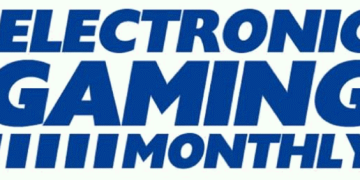
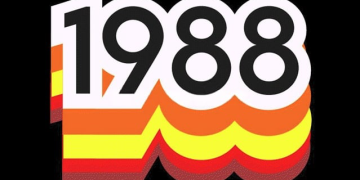


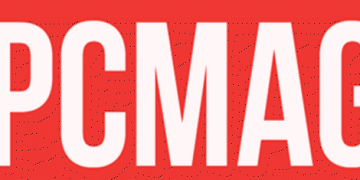
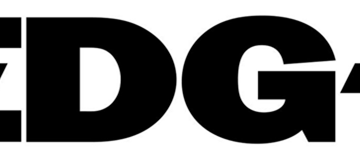
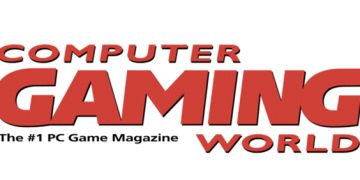




























![BASENOR 3PCS Tesla Model Y Model 3 Center Console Organizer [Carbon Fiber Edition]…](https://techcratic.com/wp-content/uploads/2025/08/71R5dfCR9FL._AC_SL1500_-360x180.jpg)















![Alien: Romulus – 4K + Blu-ray + Digital [4K UHD]](https://techcratic.com/wp-content/uploads/2025/08/81fBb0Z1egL._SL1500_-360x180.jpg)
